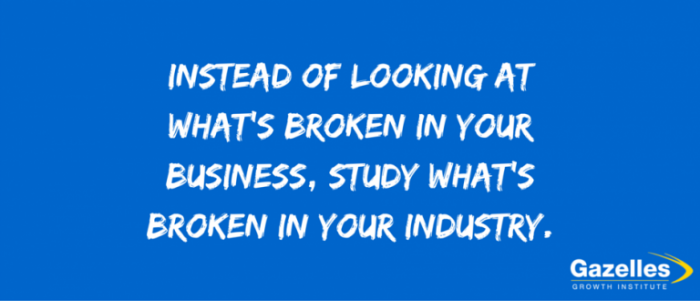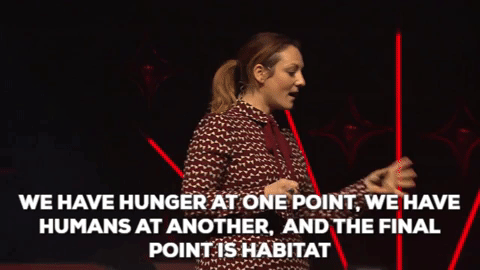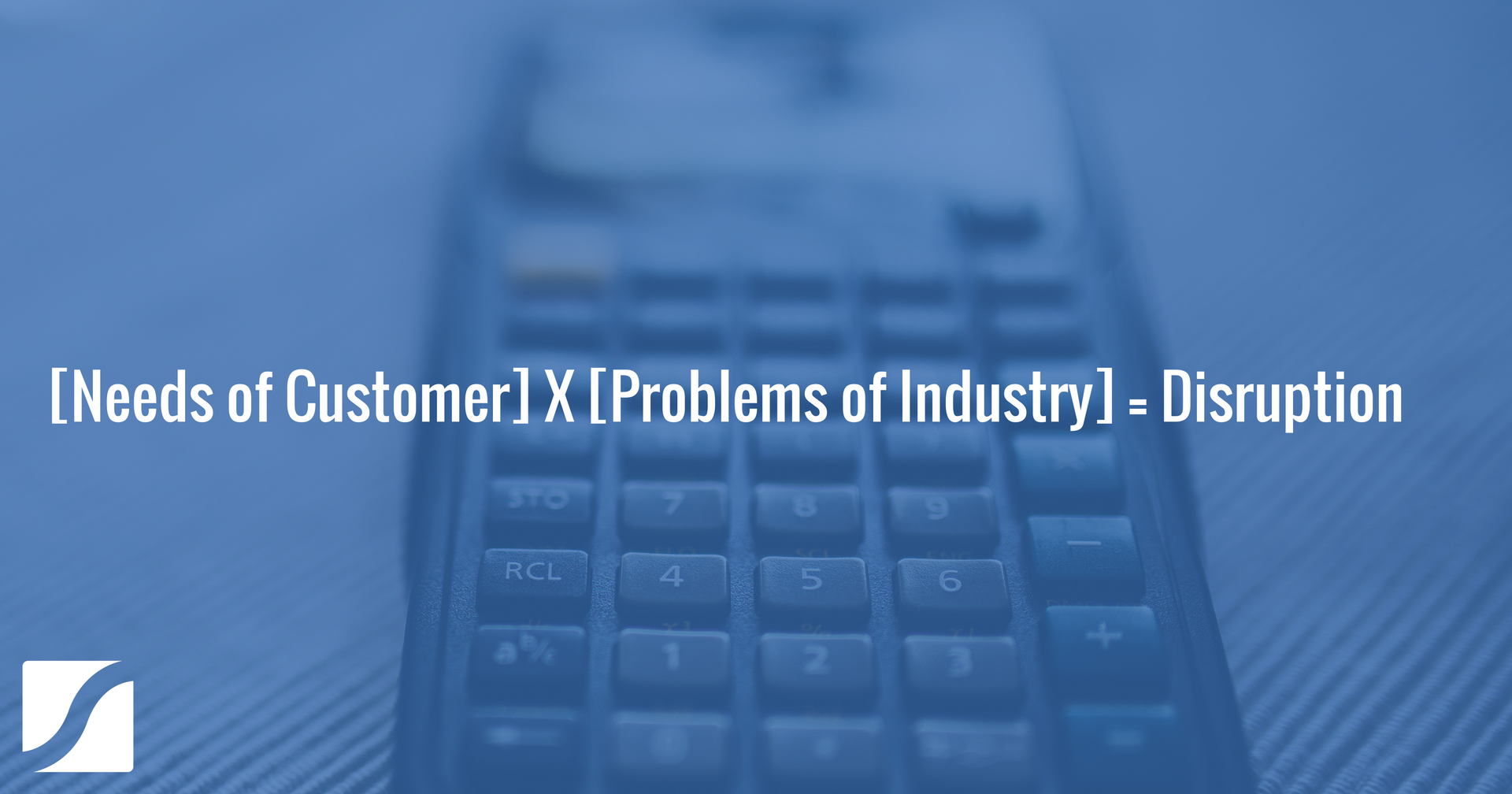Identify Then Break Your Industry Bottlenecks

You know you want to grow your business but you aren’t sure how. What’s the first thing you do? You start looking at your business model to discover what is working and what isn’t. These are commonly referred to as business bottlenecks. This perspective focuses on incremental improvements that lead to incremental growth. It’s the standard rhythm for businesses.
But, you aren’t going to become a revolutionary business or make revolutionary leaps in growth by making incremental improvements.
Instead of looking at what’s broken in your business, study what’s broken in your industry. These are commonly referred to as industry bottlenecks. Identify your industry bottlenecks - problems faced by your entire industry, solve them and win in the race against your competition.
Over the past five years, Professor John Mullins (London School Of Business), Professor Eileen Weisenbach Keller (Northern Kentucky University) and myself (entrepreneur and speaker), have been studying businesses that look to and succeed at identifying their industry bottlenecks, solving them and then putting those solutions into action. It’s a concept born from Verne Harnish, a serial entrepreneur, Fortune Magazine columnist, a Co-Founder and thought leader at Growth Institute.
We’ve found that industry bottlenecks fall into five categories or levels, which companies apply to locate a bottleneck.
- Eliminating expense
- Remaking the customer buying experience
- Overcoming customers’ psychological barriers
- Winning hearts and minds
- Eliminating negative externalities
Eliminating Expenses
Once upon a time Blockbuster held the monopoly on movie rentals and sales. If you told me in 2000 that Blockbuster would soon go out of business, I’d probably laugh. And yet in 2010, Blockbuster filed for bankruptcy. What happened? They stopped questioning the industry’s status quo and as a result their competition (unknown to them at the time) out-innovated the movie rental industry goliath.
Who were some of the innovators? Red Box opened in 2002 and devised the concept of putting movies in a vending machine. Netflix started mailing your DVDs directly to your house and online streaming became the new hit thing. All of these innovations sought to eliminate the movie rental industry’s biggest expenses: real estate and labor. As a result, Blockbuster is a thing of the past and we have new rental movie industry titans.
Remaking the customer buying experience
In 2011, Bonobos decided to break an industry-wide bottleneck: purchasing and returning clothes online. They opened 11 small, stylish locations where shoppers can try on pants in different styles and sizes, thereby eliminating the “try before you buy” hassle faced by online shoppers.
Overcoming customers’ psychological barriers
In 2009, the world was falling apart. Businesses were filing for bankruptcy, unemployment was at 8% and banks were scrambling to get their act together. The last thing consumers wanted was to take the risk of purchasing a car today when they had no idea if they would have jobs tomorrow.
In an effort to combat the customer's psychological barrier, Hyundai announced their buyback guarantee. If a consumer purchased a Hyundai and they lost their jobs, consumers could return it without hurting their credit.
The result? In the two years Hyundai maintained the buy back guarantee, sales increased 15%+ and Hyundai only had to buy back 350 cars!
Winning hearts and minds
John Ratliff, former owner of Apple Tree Answers, a call answering service in Delaware, was faced with 110% turnover in his business (industry average was 300%). According to John, employee turnover was costing him $5,000 per turnover – a startling $2 million problem annually.
This was an industry-wide problem faced by the call answering business. In an effort to solve the problem, John and his executive team started a program called Dream On modeled off the Make A Wish Foundation. Front line employees were encouraged to submit dreams to the executive team with the promise that some would be chosen and fulfilled.
Over four years, John granted a total of 275 dreams. The end result? John created an awesome company culture that reduced employee turnover from 110% in 2008 to 30% in 2012, decreased customer attrition, increased gross margin from 47% in 2008 to 60% in 2012 and increased EBITA from 14% in 2008 to 22% in 2012.
Eliminating negative externalities
During my summers, I spend time on the Chesapeake Bay fishing and each year, talk grew of the detrimental affects chemical fertilizer and pesticides were having on marine populations. It was a side effect of fertilizer and pesticide runoff from lawn care applications and a big bottleneck for the lawn and landscape industry.
At the time, I had been running a successful lawn care company called Happy Lawn.
In 2008, fertilizer prices started skyrocketing and I stockpiled my warehouse with hundreds of thousands of dollars worth of fertilizer. Shortly thereafter, the warehouse caught fire and burned to the ground. It turned out I didn’t have the insurance to cover the fertilizer loss and I now had to re-purchase my supply at a high cost.
I became just desperate enough to try an innovative product called Holganix. It’s a 100% organic plant probiotic that allows fertilizer users to use up to 75% less fertilizer and pesticides and still get optimal results.
In 2010, after seeing Holganix work with Happy Lawn, I sold the lawn care business and bought the IP for Holganix. Today, we provide solutions for lawn care companies, professional sports fields and PGA golf courses to eliminate their use of chemicals and increase plant health naturally.
To learn more about breaking industry bottlenecks, check out my Harvard Business Review Article: https://hbr.org/2015/07/break-your-industrys-bottlenecks



